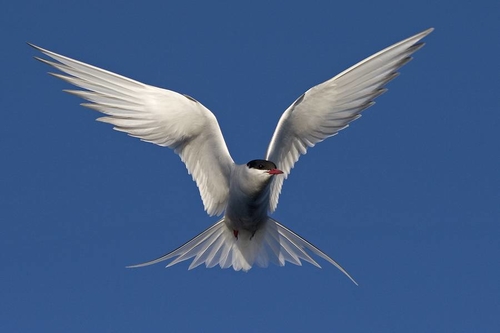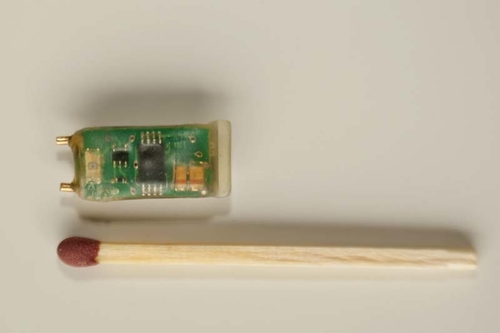PhD thesis on Arctic tern Published 26.05.2010

2 June 2010, Scientist Carsten Egevang, Greenland Institute of Natural Resources, defended his Ph.D. thesis on Arctic tern at Copenhagen University.
Carsten Egevang’s thesis presents studies conducted on the archipelago Kitsissunnguit (Grønne Ejland), Disko Bay, West Greenland, and on the island Sandøen, Northeast Greenland, during 2002-2008. Results from the study represent important scientific documentation of the biology of Arctic tern in Greenland and provide new knowledge of a species that was relatively unknown until 2002.
The Ph.D. thesis consists of a summary and five scientific papers, one of which in particular has attracted great attention from the world press. The paper describes the Arctic tern’s annual journey from its breeding grounds in Greenland to its winter habitat in the Antarctic and back again to Greenland – the longest migration recorded for any animal. The distance covered (on average 71,000 km) is interesting in itself, but the study was also able to document how the terns during their long migration are independent of highly productive marine areas and follow a route with favourable wind directions. The study is the first of its kind, and the news travelled around the world in january in the printed and electronic media.
The thesis also contains the first study of the Arctic tern’s ability to lay a new clutch of eggs if the first clutch is lost, the Arctic tern’s choice of food, and measurements of growth and survival of young Arctic terns through the breeding season. These data form part of another important study in the Ph.D. thesis: a theoretical model of the impact of egg collection on the Arctic tern population.
In addition, the thesis contains a number of recommendations for the authorities in Greenland concerning sustainable collection of Arctic tern eggs, and suggestions as to how monitoring of Arctic tern colonies can be carried out, as well as estimates of the breeding population in the two most important Arctic tern colonies in West and Northeast Greenland.
Carsten Egevang’s Ph.D. study has received financial support from the Commission for Scientific Research in Greenland (KVUG) and was completed alongside a position as a bird researcher at the Greenland Institute of Natural Resources. In private life Carsten administrates the photo agency ARC-PIC.COM, and won a category prize in the prestigious photo competition ”Wildlife Photographer of the Year” in 2009.
Download additional pictures of the Arctic tern from www.arctictern.info
For further information, please contact:
Scientist Carsten Egevang caeg@natur.gl, direct phone: +45 20788099
or Head of Department Fernando Ugarte feug@natur.gl, direct phone: +299 36 12 00
Download Carsten Egevang´s Ph.D. thesis here

Carsten Egevang of The Greenland Institute of Natural Resources with the first geo-locator ever retrieved from an Arctic tern. Sand Island, Northeast Greenland. Photo: Fernando Ugarte

The geo-locator weighs only 1.4 g and is light enough for the bird to carry it on a small ring around its leg. Photo: Carsten Egevang

